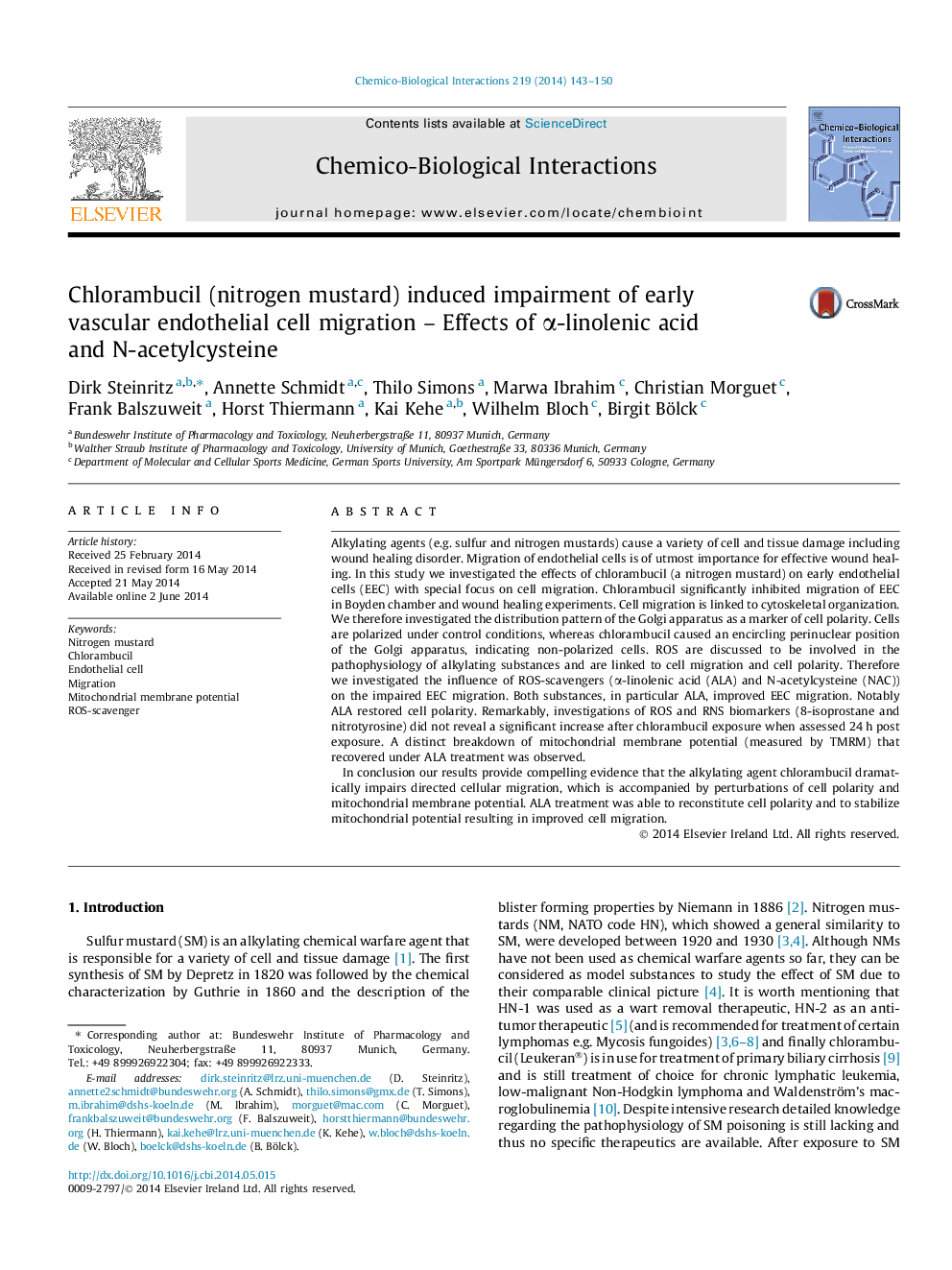| Article ID | Journal | Published Year | Pages | File Type |
|---|---|---|---|---|
| 2580435 | Chemico-Biological Interactions | 2014 | 8 Pages |
•Chlorambucil inhibits migration of early endothelial cells (EEC).•Cytoskeletal organization and mitochondrial potential is affected by chlorambucil.•The ROS scavenger α-linolenic acid (ALA) reconstitutes cell migration.•ALA stabilizes mitochondrial potential and restores cell polarity of exposed EEC.
Alkylating agents (e.g. sulfur and nitrogen mustards) cause a variety of cell and tissue damage including wound healing disorder. Migration of endothelial cells is of utmost importance for effective wound healing. In this study we investigated the effects of chlorambucil (a nitrogen mustard) on early endothelial cells (EEC) with special focus on cell migration. Chlorambucil significantly inhibited migration of EEC in Boyden chamber and wound healing experiments. Cell migration is linked to cytoskeletal organization. We therefore investigated the distribution pattern of the Golgi apparatus as a marker of cell polarity. Cells are polarized under control conditions, whereas chlorambucil caused an encircling perinuclear position of the Golgi apparatus, indicating non-polarized cells. ROS are discussed to be involved in the pathophysiology of alkylating substances and are linked to cell migration and cell polarity. Therefore we investigated the influence of ROS-scavengers (α-linolenic acid (ALA) and N-acetylcysteine (NAC)) on the impaired EEC migration. Both substances, in particular ALA, improved EEC migration. Notably ALA restored cell polarity. Remarkably, investigations of ROS and RNS biomarkers (8-isoprostane and nitrotyrosine) did not reveal a significant increase after chlorambucil exposure when assessed 24 h post exposure. A distinct breakdown of mitochondrial membrane potential (measured by TMRM) that recovered under ALA treatment was observed.In conclusion our results provide compelling evidence that the alkylating agent chlorambucil dramatically impairs directed cellular migration, which is accompanied by perturbations of cell polarity and mitochondrial membrane potential. ALA treatment was able to reconstitute cell polarity and to stabilize mitochondrial potential resulting in improved cell migration.
